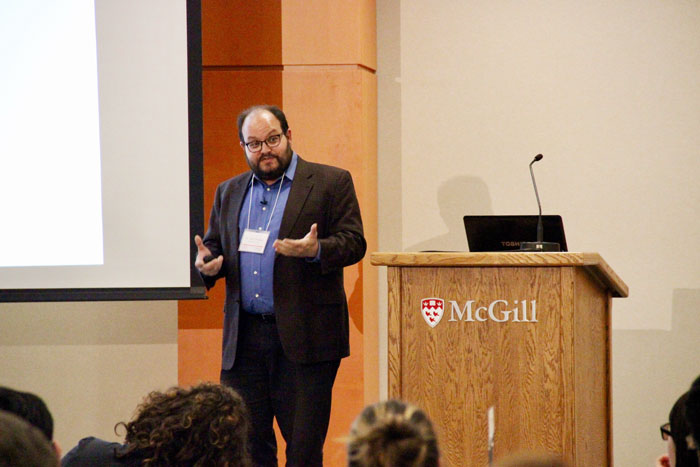The atmosphere was electric in the New Residence Ballroom on Feb. 3. Tables were filled with the energetic chatter of graduate researchers and professors in anticipation of the academic journal retraction detective: Ivan Oransky. Oransky and his partner Adam Marcus founded the popular blog Retraction Watch in 2010 to record when academic papers get retracted, how many retractions each researcher has, and the reason for every retraction.
There are many factors that can lead to the retraction of an academic paper. Oransky’s presentation, “Retractions, Post-Publication Peer Review, and Fraud: Scientific Publishing’s Wild West,” demonstrated multiple scenarios for why academic papers might be retracted.
When Ivan Oransky and his partner started the blog, they did not anticipate it to be as successful as it is today.
“[I thought that we] would post a few things a couple times a month and hope that maybe [our] mothers would read it,” Oransky said.
Today, Retraction Watch has a readership of more than 150,000 people per month. According to Oransky, the rate of retractions increased tenfold from 2000 to 2010.
Until six to eight months ago, he thought the rise in retractions might be because more academics were paying attention.
“[I thought] that we were simply better at catching all of these problems,” Oransky said. “[But] the number of papers published only grew by 44 per cent [during this time period …] so, in that case, the growth of retractions outpaced the growth of papers being published.”
According to Retraction Watch, of these papers, two-thirds are retracted due to misconduct, 20 per cent due to honest errors, and the rest for reasons unknown.
Retraction Watch has a leaderboard of 30 individuals and the number of retractions they have had. Coming in first with 183 retractions is Yoshitaka Fujii, an anesthesiology researcher who got caught publishing results that were too good to be true. Fujii also happened to spend two years at McGill as a research fellow during the 1990s.
According to Oransky, when someone’s results are too beautiful, “it really means the opposite.” John Carlisle tried to replicate Fujii’s results and found that the likelihood of achieving them was statistically close to impossible. Fujii was forced to retract his papers and was dismissed from his associate professorship at the Japanese University where he had conducted his false research.
Papers aren’t always retracted for negative reasons. Nathan Georgette—at the time, an undergraduate student at Harvard—retracted a paper he had written in high school after conducting further research and finding mistakes in his original paper. Georgette also proves that retractions don’t always ruin careers. He went on to the Harvard Medical School and is successfully continuing his research in epidemiology.
Although the world of retractions and scientific publishing consists of a matrix of opaque procedures and regulations, scientists are rewarded for admitting their mistakes. Oransky and his team at Retraction Watch not only educate the public on the multiplicity of reasons behind retractions, they also ensure that the world is aware of mistakes when they happen.








